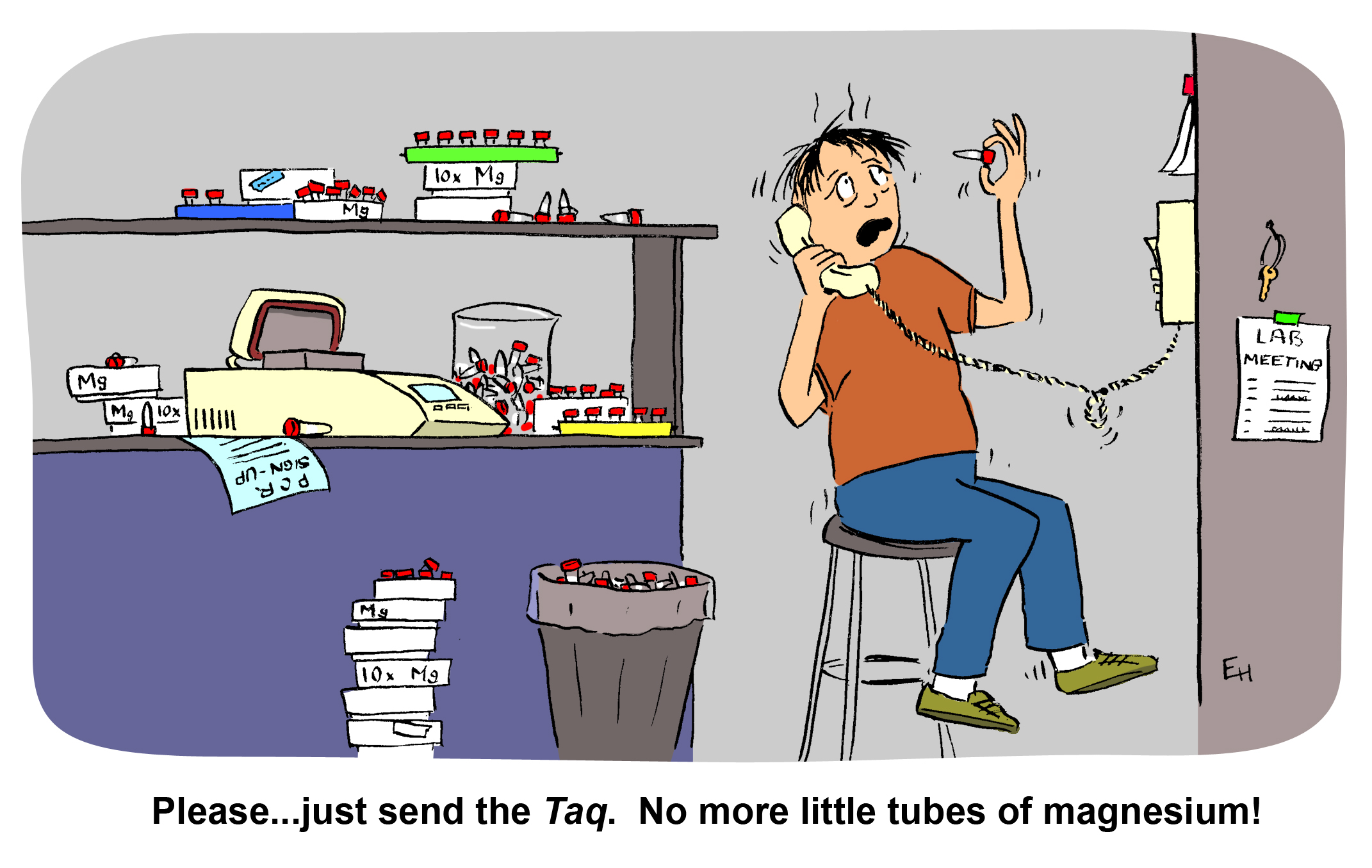We decided to revisit a popular blog from our Promega Connections past for those of you in the amplification world. Enjoy:

-
- Modify reaction buffer composition to adjust pH and salt concentration.
- Titrate the amount of DNA polymerase.
- Add PCR enhancers such as BSA, betaine, DMSO, nonionic detergents, formamide or (NH4)2SO4.
- Switch to hot-start PCR.
- Optimize cycle number and cycling parameters, including denaturation and extension times.
- Choose PCR primer sequences wisely.
- Determine optimal DNA template quantity.
- Clean up your DNA template to remove PCR inhibitors.
- Determine the optimal annealing temperature of your PCR primer pair.
[Drum roll please]…and the most important thing you can do to improve your PCR results is:
- Titrate the magnesium concentration.
The following two tabs change content below.


Kelly Grooms
Scientific Communications Specialist at Promega Corporation
Kelly earned her B.S. in Genetics from Iowa State University in Ames, IA. Prior to coming to Promega, she worked for biotech companies in San Diego and Madison. Kelly lives just outside Madison with her husband, son and daughter. Kelly collects hobbies including jewelry artistry, reading, writing and knitting. A black belt, she enjoys practicing karate with her daughter as well as hiking, biking and camping.
Latest posts by Kelly Grooms (see all)
- Don’t Flush Your Kitty Litter! Toxoplasmosis Is a Growing Threat to Sea Otters and Other Marine Mammals - November 12, 2024
- Tardigrade Proteins Might Solve the Cold Chain Problem for Biologics - October 17, 2024
- Mpox—The Latest Zoonotic Virus Making Headlines - September 12, 2024

Reblogged this on Promega Scientific Training.
Is a PCR of 28 better than a PCR of 40? I’m confused if the lower number is better or the higher number is better?
Hi Janet, Are you asking about cycle number? The number of cycles and the conditions that are used for a PCR are highly dependent on the target that is going to be amplified, the primer design and the sample that is being looked at. There isn’t a single “better” number of cycles for all PCR–the optimum conditions, including number of cycles, are determined for each PCR run. Michele